Student Projects
VE/VM450

Machine Learning (ML) to Dispatch on a Mobility-on-Demand Platform
Sponsor: Mandy Ma, DiDi
Team Members: Bingqi Sun, Shuwan Feng, Dongjian Chen, Sijun Zhang
Instructor: Prof. Mian Li
Project Video
Team Members
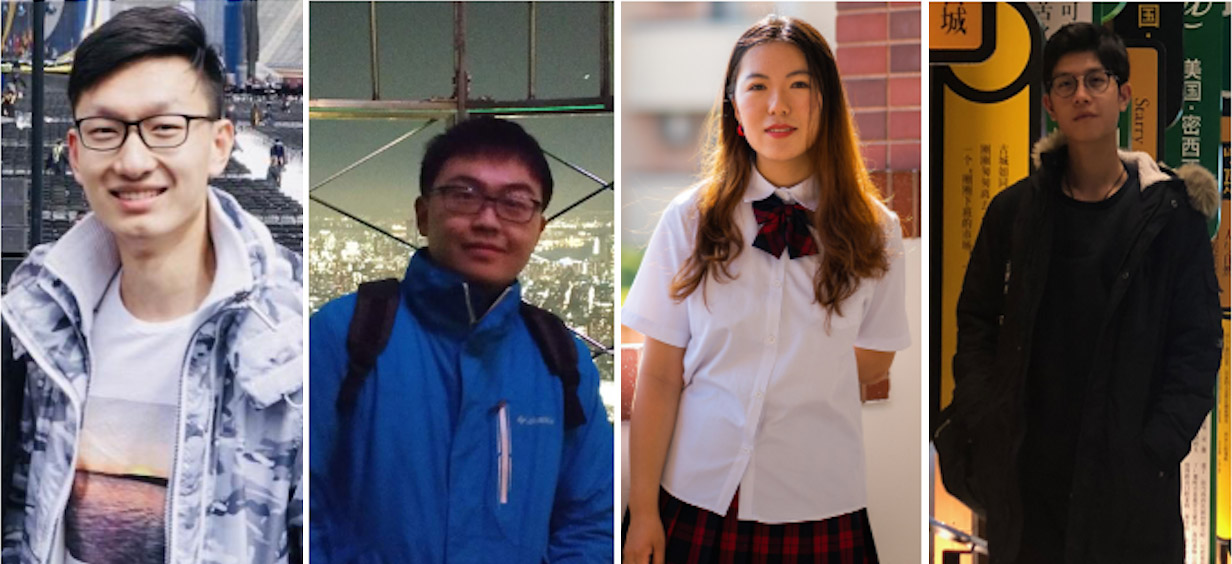
Team Members:
Bingqi Sun
Shuwan Feng
Dongjian Chen
Sijun Zhang
Instructor:
Prof. Mian Li
Project Description
Problem Statement
This project is trying to solve the problem of order dispatching on a mobility-on-demand platform by applying machine learning(ML) techniques. There are many mobility-on-demand platforms in the market all over the world, such as Uber, KuaiDi…… In this project, our team will solve the problem for our sponsor—DiDi.
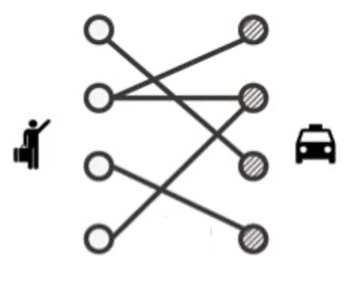
Fig. 1 Dispatching problem
Concept Generation
The system is decomposed into into three subfunctions as shown in the Fig. 2. First we estimate weight for each pair of order and driver based on distances, rewards, regression or machine learning solution, then we match order and vehicle according to their weight using Linear Matching or KM Algorithm, and in the last subfunction we evaluate the dispatch results using the system provided by Didi.
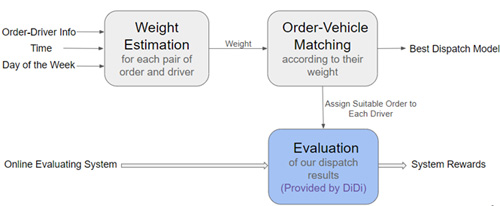

Fig. 3 Concept Diagram
Design Description
In the first subfunction, Neuro Network is chosen to fit on the long-term revenue and current order-driver information for weight estimation. In the second subfunction, we implement Greedy-KM Mixed method to match order and vehicle according to their weight, and in the last subfunction our evaluation system is provided by Didi. We would select the dispatch model which could get the highest system rewards.
The greedy KM mixed method do greedy matching for huge subgraph and do separated KM for small subgraph. This way successfully reduced the time complexity for huge sparse graph to the linear of the input amount without greatly losing the optimality.
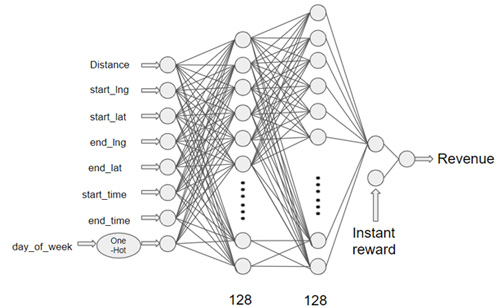
Fig. 5 Step-by-step input structure in Neural Network
Validation
Validation Process:
We will use the score from KDD competition platform to test time complexity, trajectory outlier elimination and system total rewards. To use the platform to test the performance of our solution, we need to upload our algorithm to the platform. The platform input order-driver information of 24 hours into our model in the order of time and we return the dispatch results. Then we get the total driver income from the platform as the score.
Photoacoustic and ultrasound imaging techniques can be used for detecting osseous and vascular structures simultaneously. The key to achieve this goal is to set up the dual modality system. And also, the accuracy and speed of the detection is very important to form the images.
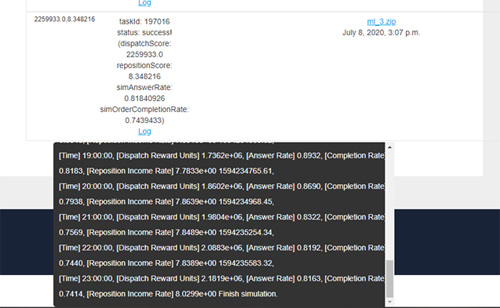
Fig.6 KDD Competition Score
Acknowledgement
Sponsor: Mandy Ma from DiDi
Mian Li, Chengbin Ma, Chong Han, Jigang Wu and Shouhang Bu from SJTU Global College
Reference
[1] Biendata. KDD CUP 2020: Learning to Dispatch and Reposition on a Mobility-on-Demand Platform. [EB/OL]. 2020[2020-07-20].
https://www.biendata.xyz/competition/kdd_didi/evaluation/.
